Lead Free Glassware Brands
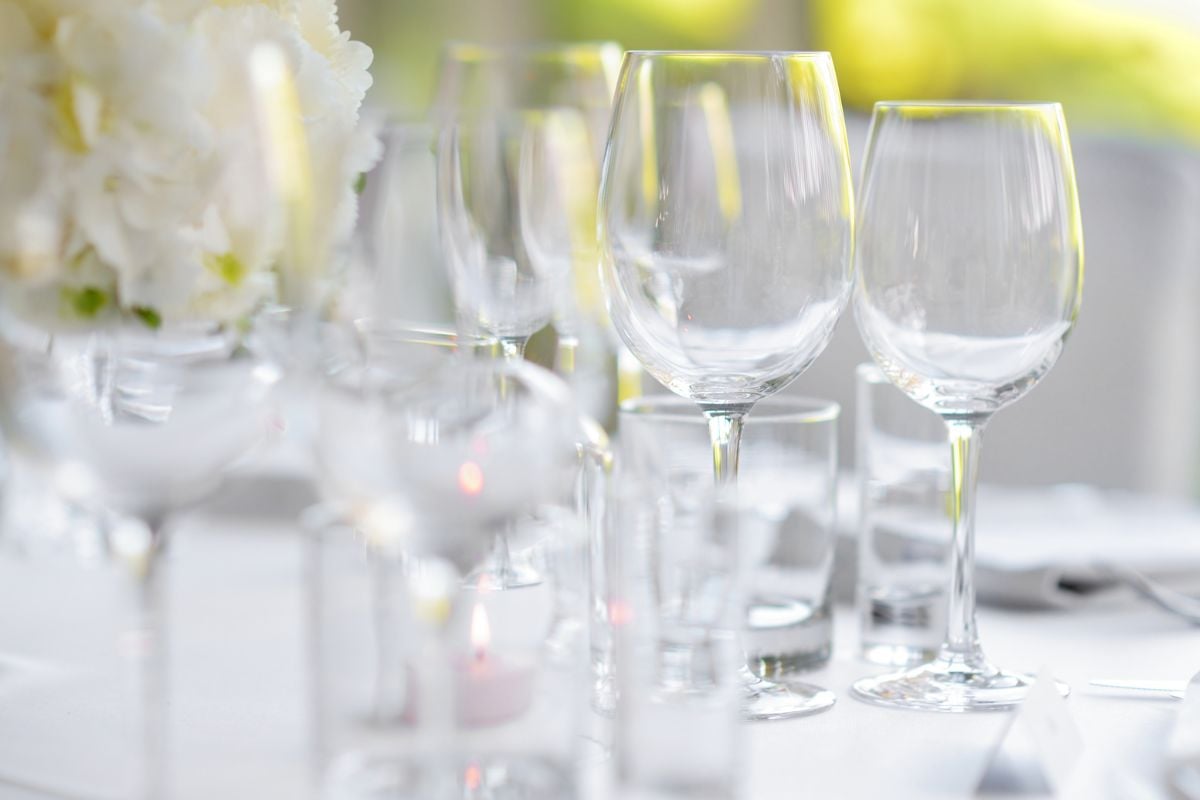
With a few exceptions, glass is the safest material for items that come in contact with food. Normally, glass does not leach lead, cadmium, or other heavy metals unlike ceramics and clay. And unlike plastic, it does not leach hormone-disrupting chemicals. So, if you are considering using glass products, such as tableware, cookware, and food storage containers, good for you!
In this special lead free glassware review post, you will learn about common types of glass so you can make the best decisions for your kitchen and health. Specifically, you will find out what kind of glass may contain lead and what kind of glass is lead and cadmium free. Plus, you will get some options for safe glass dinnerware and safe drinking glasses. For general guidance on finding safe cookware, refer to my Safe Cookware Guide.
Lead Free Glassware Review
To begin with, let’s discuss three types of glass material, commonly used for manufacturing cookware, dinnerware, and drinkware:
- borosilicate glass
- soda lime glass, and
- lead glass.
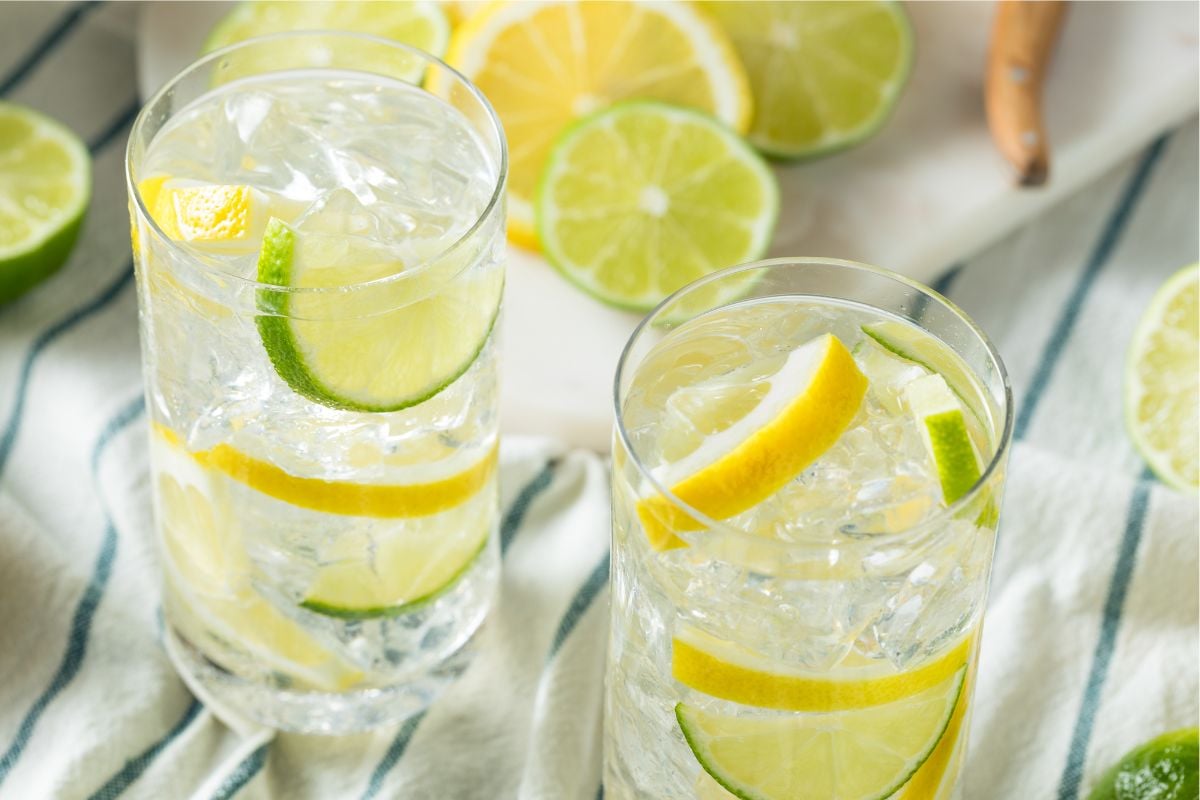
Borosilicate Glass
Typically, borosilicate glass consists of around 81% silicon dioxide (SiO2), 5-13% boron trioxide (B2O3), and smaller concentrations of sodium oxide and aluminum oxide. It is boron that provides the glass with its dimensional stability and prevents it from shrinking or expanding when the temperature changes (source and source).
As you can see from its composition, borosilicate glass should be lead free glassware. Plus, independent testing by Tamara Rubin, the founder of Lead Safe Mama, showed that household objects made of borosilicate glass were lead and cadmium free.
What about aluminum – can borosilicate glass leach aluminum?
In a lab experiment with borosilicate glass vials and buffer solutions, it was found that phosphate buffer solution had the highest possibility of forming particles containing aluminum. And this study on glass flasks and amino acid solutions relates aluminum contamination to the cysteine, cystine, glutamic acid, and aspartic acid stored in the glass flasks.
Personally, I am not very concerned about the possibility of aluminum leaching in glass dinnerware. First, I haven’t seen any independent tests raising alarm for aluminum leaching from any household glass products. Second, in our kitchens, we hardly use the substances described in the experiments above that provoked aluminum leaching. Plus, if there is any leaching, the amounts should be insignificant. Furthermore, when I was tested for stored levels of heavy metals in my body as well as current exposures, aluminum was not an issue for me, and I use glassware all the time.
Soda Lime Glass
As for soda lime glass, its typical composition is 70–75% silicon dioxide (SiO2), 12–16% sodium oxide (Na2O), and 10–15% calcium (CaO) (source and source).
Soda lime glass is more common than borosilicate glass, especially in the US. For example, popular Pyrex glass storage containers and glass baking dishes are made from soda lime glass (they used borosilicate glass until 1998). Many glass dinnerware options are made from soda lime glass as well.
Based on its composition, soda lime glass should also be lead free glassware. However, beware of colored or painted glass cookware. Indeed, Tamara Rubin tested Pyrex measuring cups and found elevated levels of lead in the painted red markings on the outside. Additionally, she tested newer blue Ball mason jars and found small levels of lead in them. Conversely, clear Ball glassware seems to be the most consistently lead and cadmium free glassware.
Lead Glass
The chemical composition of lead glass includes 55–65% silicon dioxide (SiO2), 18–38% lead oxide (PbO), and 13–15% sodium oxide (Na2O) or potassium oxide (K2O). Lead oxide makes the glass dense, hard, and X-ray absorbing. Hence, you see lead glass in decorative glassware for its crystal effect and in special optical glasses (source).
Obviously, glassware made of lead glass is not lead free glassware. For instance, this study found that storing wine in lead crystal decanters even for one day would pose a hazard. Hence, crystal glasses, too, are not safe drinking glasses. If you own some, try using them only on special occasions and emptying them fast. Also, please pay attention as to whether there is a California Proposition 65 warning on your glassware (even if you are not in California).
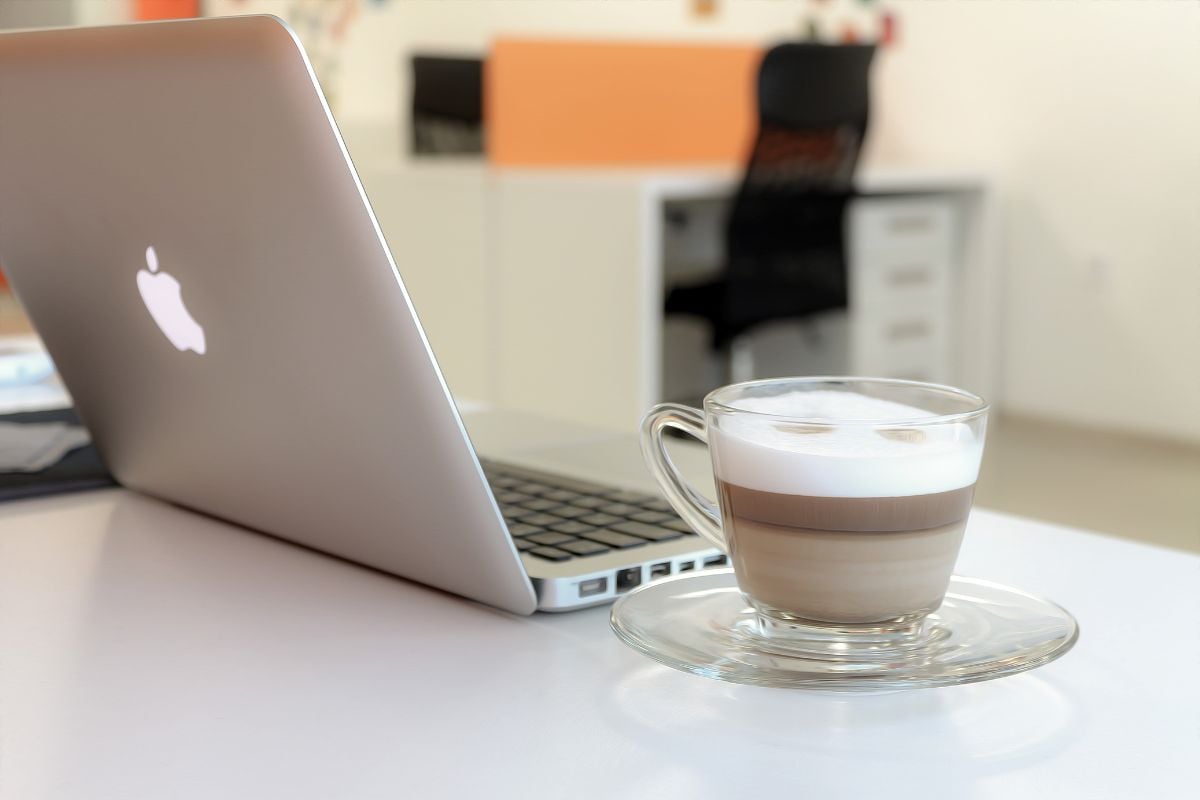
Lead Free Glassware Brands
Safe Glass Dinnerware
I have placed my favorite lead and cadmium free glass dinnerware in my Amazon shop:
- Anchor Hocking (crafted in America with tempered glass)
- Corelle dishes (made in the USA with tempered Vitrelle® glass; durable, chip and break resistant)
- Duralex (made in France with tempered glass)
Safe Drinking Glasses And Mugs
First off, while I like Corelle dishes, I would stay away from Corelle mugs. To clarify, the material in Corelle mugs is not glass, but stoneware. When Tamara Rubin tested Corelle dinnerware, she found some lead in the mugs.
Also, remember to avoid colored Ball jars as they tested positive for lead.
As for safe drinking glasses and mugs, just like glass dinnerware, you can easily find them in my Amazon shop:
- Anchor Hocking Glass Mugs
- Ball Mason Jars (exclude the colored ones)
- Duralex Glasses (you can buy them on the Duralex website, too)
Best Non-Toxic Food Storage Containers
You can find the best non-toxic food storage containers in my Amazon shop:
- Anchor Hocking Storage Containers
- Ball Mason Jars
- Duralex Food Storage Containers (you can buy them on the Duralex website, too)
- Pyrex Food Storage Containers
I store homemade tomato sauce and soup in Ball Mason jars. They work well for my freezer, saving good storage space. Make sure you wash and wipe the lids to avoid rusting but do not put them in the dishwasher. And do not let food or liquid touch the lids as they may contain BPA or other bisphenol chemicals. (Learn more in my post BPA-Free Cans – Safe Or Toxic?)
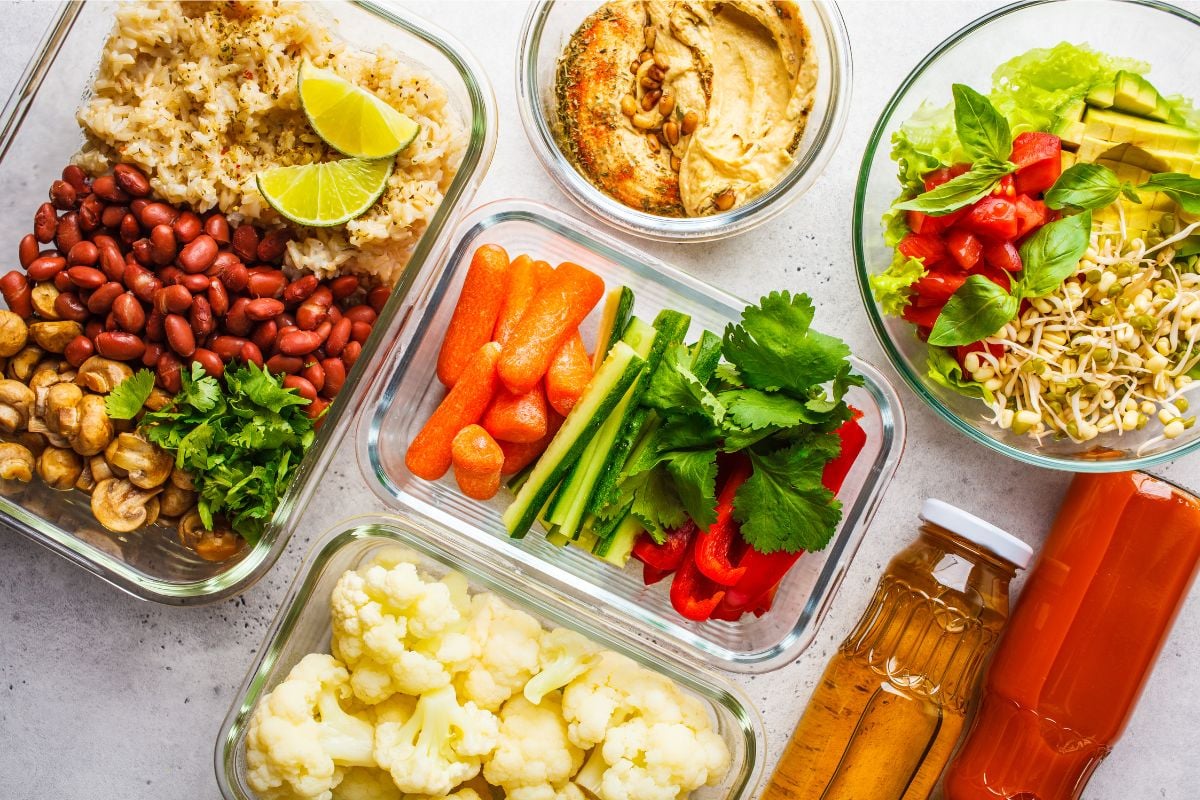
Glass Cookware
In my Amazon shop, you will find several options for Pyrex bakeware. Personally, I use it all the time as I consider it safe lead free glassware.
As for Visions cookware, it is made of glass ceramic. While the cookware is made in France, the lids are made in China. The ceramic component of the glass enables it to withstand extreme temperatures, even on a stovetop.
Tamara Rubin’s tests of Visions cookware for lead and cadmium revealed small amounts of lead and other heavy metals in some pieces. Hence, I’m not comfortable calling it “safe.” We do not use Visions, but if you are interested, you can find it on Amazon here and here.
Summary of Glass Dinnerware Review
Unlike Borosilicate And Soda Lime Glass, Crystal And Colored Glass Is Not Lead Free Glassware.
To sum up, out of the materials commonly used for manufacturing cookware, dinnerware, and drinkware, I would avoid lead glass and colored glass. Indeed, neither of them is lead free glassware.
In my opinion, some lead and cadmium free glassware brands that you can find in my Amazon shop include:
- Anchor Hocking glass products
- Ball Mason jars
- Corelle dishes (not mugs)
- Duralex safe drinking glasses and dishes (you can buy them on the Duralex website, too)
- Pyrex bakeware and food storage containers.
For additional assistance on finding safe cookware, refer to my Safe Cookware Guide. Also, you can find tons of useful information on the I Read Labels For You blog and in the IRLFY shop.

Download The Free Guide!
5 Powerful Steps To A Non-Toxic Home
Join our informed consumer community and get our free guide the “5 Powerful Steps To A Non-Toxic Home”.

 Written by
Written by  Health-related claims have been reviewed by
Health-related claims have been reviewed by 

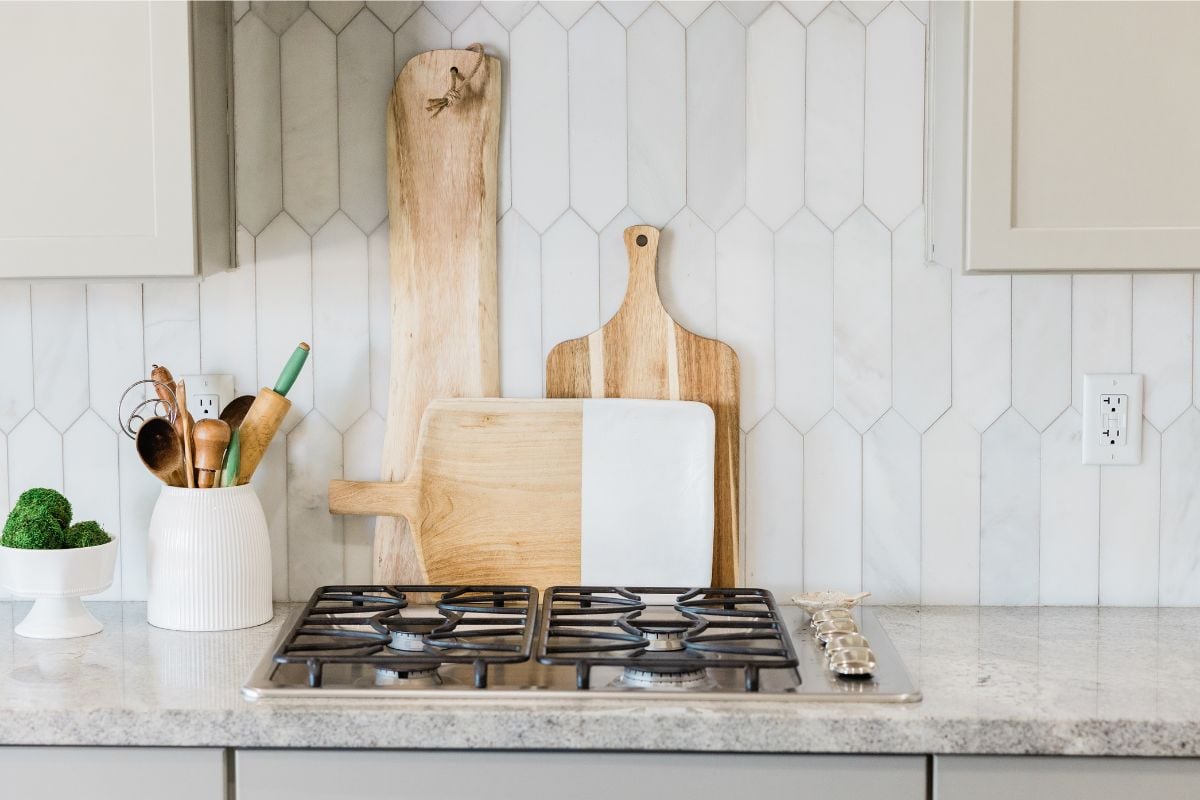
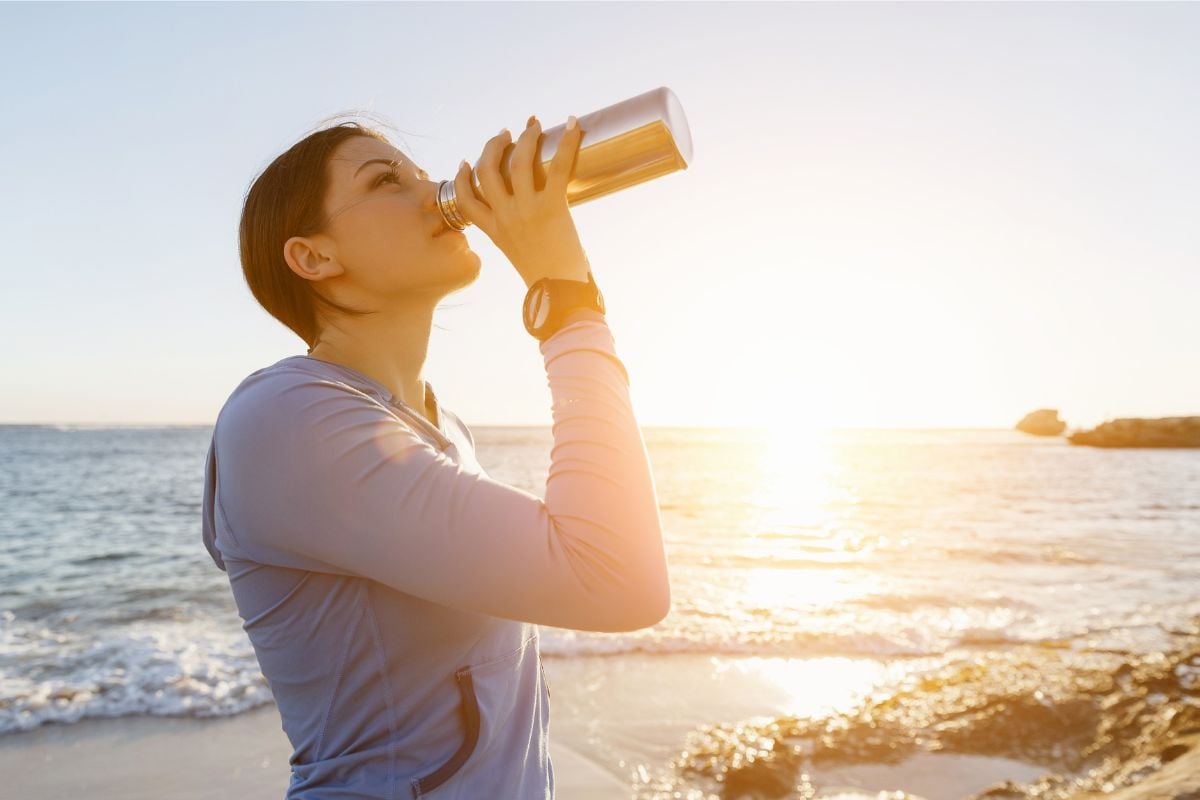
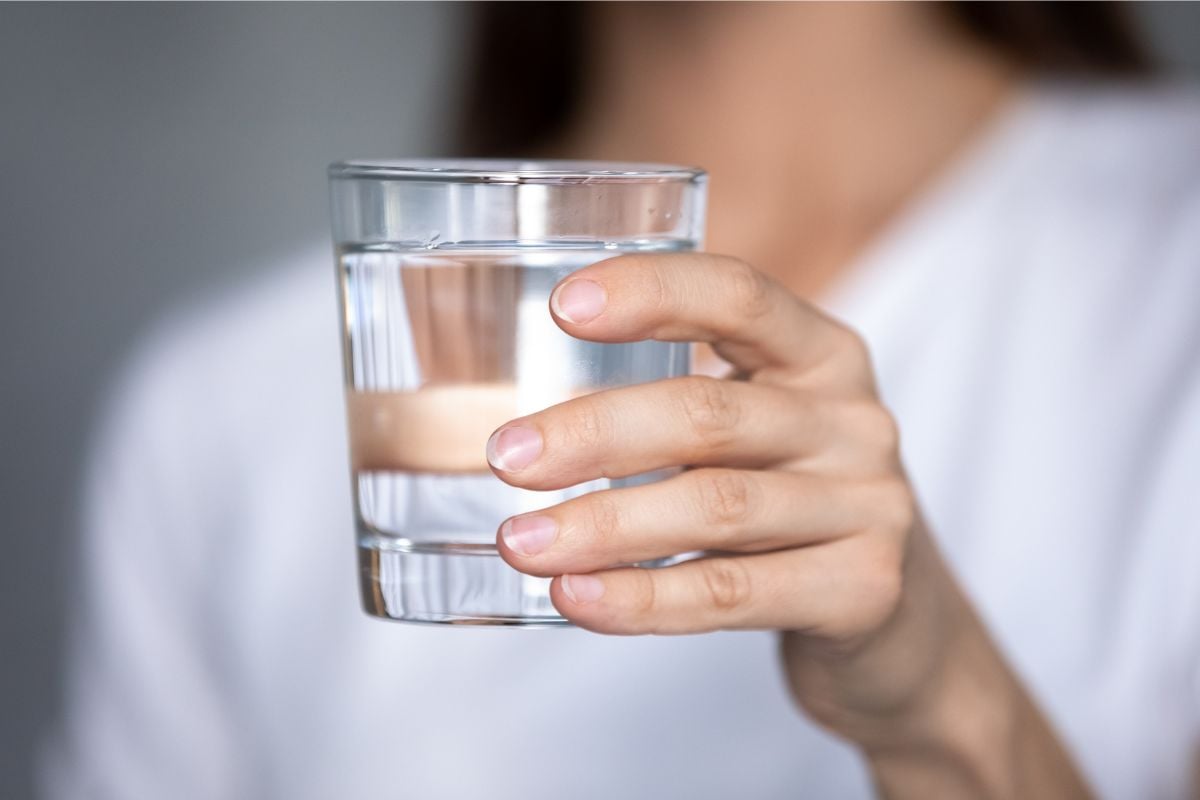
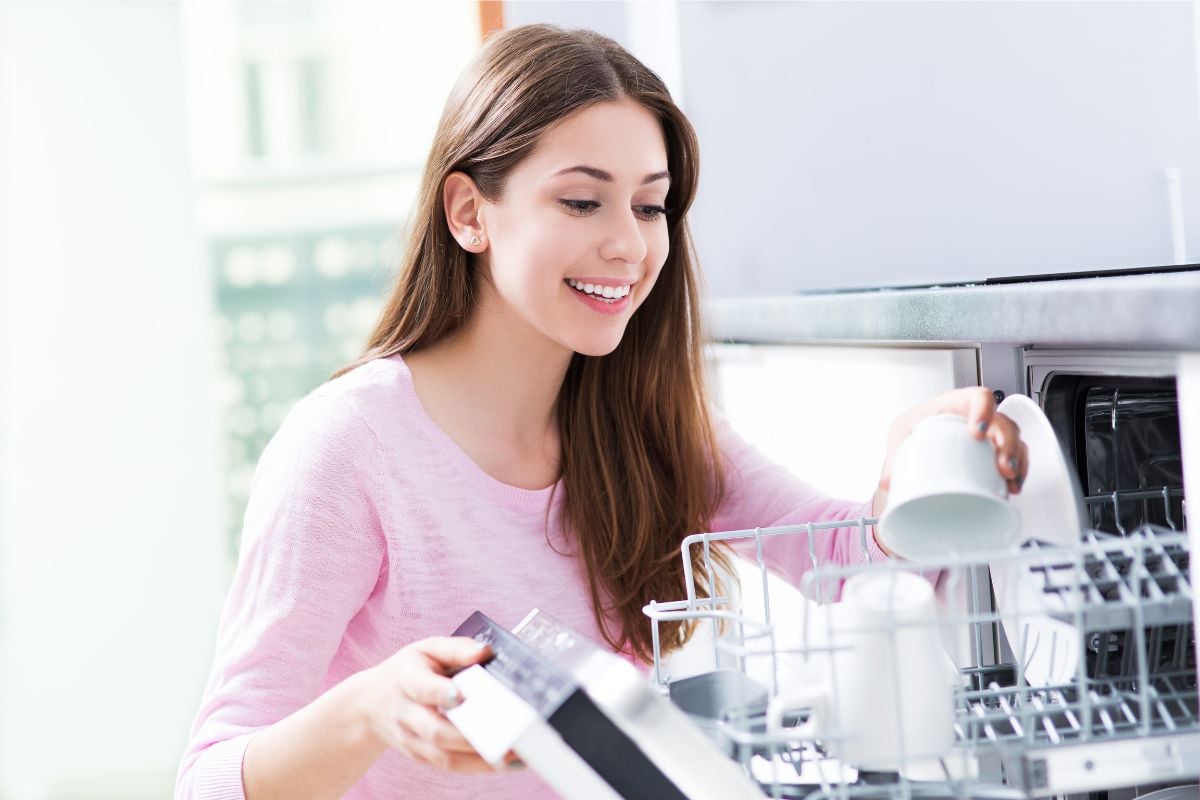
This article was amazingly helpful. I’ve been trying to do research into the best glassware and this was the best gide! Thank you.
Thank you for your feedback, Serenity, we appreciate it!
Awesome sight. Thank you for this 🙂
Hello Irina,
I love your blog and thought I’d reply regarding “Citrate” in your “Lead-free glassware options post.”
Citrate is a salt or ester of citric acid, so it would probably be found in the citrus fruit in most kitchens.
I just thought I’d put in my two cents,
Dann
What about glass that has a warning for dry goods only. What does this indicate?
How do you find that? Just reach out to the company? Thanks!
What’s the verdict on porcelain made in China? My mom got me a dishware set from Amazon that are porcelain and made in China. Should I try to find something new? Thanks!
Hi, Megan: It would be good to see their heavy metal test reports. ~Irina
How do you find this information?
I want to use the ball mason jars to store dry goods but you say the food should not touch the lid because it may contain bpa so what should I do replace the lid ?
Hi Irinia – you mentioned only choosing clear glass. Do you know if amber glass used for tinctures and other herbal remedies is safe? They are not heated but herbs are decocted in either cider vinegar or alcohol, strained and then the liquid is stored in amber glass so it does not degrade with exposure to light. Any advice would be appreciated! Thank you.
Lisa 🙂
Hi, Irina,
I am thinking of purchasing Anchor Hocking Trueseal storage containers. My worries is not with the glass itself, but the lids. They are made in china are are supposed to be BPA-free lined with silicone. Can you kindly share your thoughts? I am also considering Pyrex, but lids may not seal as well. Thank you.
I have Corelle dishes and have 2 sets of Corelle mugs, one set is porcelain style Swept made in China the other Corelle made in Japan. Would these both likely contain lead? What mugs would you suggest, glass by Duralex or Bormioli? Also I had disposed of two crockpots that were 25 yrs old years ago and saved the clear glass lids. I sometimes use them as covers on Pyrex mixable bowls to microwave or store food, could these lids also contain lead? I think the Crock pots were made by Hamilton Beach. Thank you.
Hi, T: I don’t recommend Corelle mugs made of porcelain/ceramic in China. ~Irina
The clear glass lids should be okay. ~Irina
Hello,
Love the information; very helpful!
Have you ran any tests on glass medicine dropper bottles? Both clear & amber. Most come in 1-4 ounce sizes. Many people use them for essential oils, but herbalists use them for tinctures so very important to know if they contain lead. It would be great if you could test glass dropper bottles that herbalists & others use for internal use. 🙂
Rebecca
Do you have a recommendation for a blender to make smoothies?
Not yet.. Thank you for asking though, Liz. ~Irina
I want to purchase a full set of Visions cranberry cookware (but none with the non-stick bottom). Do you know if this colored version is safe? (And if not, what about the amber colored?) Also, someone mentioned a scanner to test with. Do you have the information on the name/model of the scanner, as I would love to test everything in my kitchen.
Thank you so much for the fantastic article and all the work you are sharing to help the rest of us!
I don’t have any information on the safety of cranberry Visions. Where did you see it? ~Irina
It was in a comment from Virginia on Sept 8, 2019 at 5:40pm:
“So if anyone knows of testing that I can do (cannot afford the scanner!) or knows of someone else who has already done it on these particular “pressed” glass beauties, please let me know. I have a beautiful 40 piece set and 6 extra luminarc tumblers that are just gorgeous! I’m truly hoping that these are fine so long as they are not crystal. Thanks so much”
I’m really wondering about a scanner. Is there something that can be purchased to ‘scan’ for lead? Thanks again! (My scanner question stems from the posting I have copied and pasted below.)
It was in a comment from Virginia on Sept 8, 2019 at 5:40pm:
“So if anyone knows of testing that I can do (cannot afford the scanner!) or knows of someone else who has already done it on these particular “pressed” glass beauties, please let me know. I have a beautiful 40 piece set and 6 extra luminarc tumblers that are just gorgeous! I’m truly hoping that these are fine so long as they are not crystal. Thanks so much”
They are probably talking about the XRF lead testing scanner. ~Irina
Hi everyone!
Does anyone have information about the Ruby red arcoroc pressed glass dinnerware and lead? How about luminarc ruby red tumblers? I’ve done the light test and the hitting with a metal knife test, but nothing. I also bought a few lead strips to test. The only thing I found online was that this company produced leaded crystal and then pressed glass and they were not the same.
I still scratch my head because there should have been a HUGE quantity of people, especially the rich, dropping like flies using dinnerware and crystal glasses for drinks!!! Yet, people from earlier generations were healthier then than today! Just weird.
So if anyone knows of testing that I can do (cannot afford the scanner!) or knows of someone else who has already done it on these particular “pressed” glass beauties, please let me know. I have a beautiful 40 piece set and 6 extra luminarc tumblers that are just gorgeous! I’m truly hoping that these are fine so long as they are not crystal. Thanks so much
Do you know if blue cobalt blue glass is safe? It’s become very popular for soap pumps and spray bottles. Blocks uv light. Is it different from other colored jars? Thank you love the blog 🙂
The clear glass Anchor Hocking mugs are showing a California Prop 65 warning on the Webstaurant Store online. Here is the link and what should I make of that? Thanks https://www.webstaurantstore.com/anchor-hocking-83045a-customizable-16-oz-glass-cafe-mug-case/55083045A.html
Often companies add the Prop. 65 warning to every page on their website just in case. I advise contacting and asking what triggered the Prop. 65 warning on the website. Please let us know what you find out. Thanks. ~Irina
I was just about to purchase these and saw the same thing. Did you ever inquire about that warning on the anchor hocking plates?
Hi Irina,
First off, thank you for the work you do on determining what’s safe to use; it is much appreciated.
I bought the jar at a thrift store recently in its original box. There is no CA Prop 65 warning anywhere. What year did those warnings start? Relatively recently, no? I recall noticing them in the last, say, 15 years, but maybe not before. They are certainly common on many consumer goods and materials for arts, crafts and so on.
–Deborah
Hi, Deborah: I believe it started in the late 80s. Personally, I wouldn’t use this product – too risky. Or if you want to use it, take a blood test to see if your lead level is elevated. Let me know if you want to talk more. I provide consultations. ~Irina
Hello Irina,
I came up on your blog while looking for info on Indiana Glass. I bought a large covered jar still in its box, labeled Crystal Glass. I don’t know the year it was produced but read someplace that the company was out of business. Since it says ‘crystal glass’ but not ‘leaded’, what do you think of it, safety-wise? Thank you.
Hi Deborah: When you bought, do you recall seeing a California Prop. 65 Warning label on it? ~Irina
Hi Irina,
I just came across your website today! I was in search of safe pantry options and was absolutely HORRIFIED after beginning my google search. Everything seems bad! I have a few questions… I saw anchor hocking seems to be a reputable brand, do you know about their storage jars?
Also, do you happen to know if BPA free cereal containers such as OXO are safe? If I’m not heating them up and only using them for dry food storage, is there potential of leakage? Or should I stick to glass for cereal too? I’m doing glass for pasta and grains. But it’s harder to find large glass containers that work for cereal.
Lastly, I have some new ceramic dinnerware that we got as a wedding gift from bed bath and beyond, as well as smoked glass drinking glasses (we use for regular drinking) my ceramic dishes are decorated, but i don’t “feel” the paint ridges like I can on some other decorative plates. They feel smooth, can these possibly contain lead??
I apologize for the abundance of questions in advance! After days of online research, this is one of the first places I’ve gotten SPECIFIC answers, rather than just general information.
Thank you in advance and for all that you do!!
Erica
Hi, Erica:
The good news is that you do not have to feel bad about asking too many questions. You are right, I do not have a customer service department to answer all the questions. However, I can provide private consultations and membership service where you can submit unlimited product review requests. Please let me know if you are interested in learning more about my paid services. Thank you. ~Irina
You don’t explain how Corelle gets their plain Vitrellr glass dishes white. I noticed that it doesn’t say lead free anywhere they are marketed or on your website here. Is plain white Corelle lead and cadium free? I’d like to know how they make their glass white without adding anything dangerous? Thanks
Unfortunately, this information is not accessible to consumers. Luckily, there are independent tests that I used to gauge the safety. ~Irina
What do you think about the green glass that Mountain Valley Spring water is bottled in?
Hi! I think that glass is better than plastic when we resort to using bottled water (I recommend filtered water instead). Mountain Valley says that their glass bottles have passed testing by the California Toxics in Packaging Prevention Act., which is testing specifically for heavy metals, lead, mercury, cadmium, and hexavalent chromium etc. What do you think? ~Irina
Thank you Irina! I have a Culligan water filter on my faucet, but I live in an apartment, so I can’t get a whole house filter. I feel I have to resort to a glass water bottle. I emailed Mountain Valley, they said the bottles are made from soda lime so I worry about the aluminum/lead but overall it seems that is the best choice out there per my options. Thank you again!
I have two older Pyrex Simply Store 4-Cup Round Glass Food Storage Dish and recently bought two more of the same ones. The round glass edges of the new ones have light greenish color, but that of the older ones don’t. I am not sure if this light greenish colored edges contain any harmful chemicals. What is your thought on this?
It is hard to say until you test it. It would depend on the intensity of the color, I think. In the article, I mentioned that Tamara Rubin found lead in blue colored Mason jars… ~Irina
These are completely fine. Everything currently produced under the Pyrex brand has to pass California’s Prop 65.
Can you recommend a good pizza stone or an alternative to make pizza in the oven?
Please can you explain the last sentence here? I don’t understand what you meant by software. Thanks.
” Also, one of my blog readers shared her experience with nickel poisoning that she believed came from Visions cookware. They had used a vintage version. I am not saying that the software caused nickel poisoning. I am just passing along the comment without adding to it.”
Thank you, Lori, for pointing out this embarrassing typo. I meant “cookware,” not “software.” 🙂 ~Irina
Hello,
Do you know if Starbucks drinking glasses (not mugs) contain lead?
Hello!
I saw a few mentions of Visions.
It’s just about all I use myself and even have a group on Facebook devoted to it. I was reading your page and wanted to note a few items to allay some concern.
Visions cookware is not, and has never been, made with borosilicate or soda lime glass. Visions is made of a transparent Pyroceram material (called “Calexium” in some regions). It’s a proprietary glass melt that is heated to the point that it crystallizes, creating a beta-quartz based glass-ceramic product.
The accounts of “exploding” glass bakeware generally stem from people mistaking brown and cranberry Pyrex for Visions and then Visions getting the blame. While damaged pieces of Visions should not be used, Visions is not susceptible to thermal shock the way regular glass bakeware is and that’s why it has always had a 10 year warranty against breakage due to extreme temperatures.
As far as new vs old. They are ALL made of the same material. Visions began production in the late ‘70s in France and has never contained lead or nickel as an element of its creation. I myself, in fact, prefer cooking in some of the earliest pieces because they are a heavier weight with thicker walls and handles on the saucepans, for example. There was a brief period (approx 1989-1995) where some lines were made with a SIlverStone (Teflon-like coating) but those are the exception. Beyond that there is NO harm in using vintage pieces providing they do not have visible damage.
They are non-porous, will not stain, and are incredibly resistant to acidic substances.
Thank you for sharing this info with us, John!
However, I’ve learned that there is 0.9% Diarsenic Trioxide (As2O3) in Calexium composition, so I wondered whether Visions cookware was really safe.
Hi Francis.
There was Diarsenic Trioxide used in the manufacturer of Pyroceram glass-ceramic products, mostly commonly vintage Corning Ware (it’s not unique to Visions). It was used to remove oxygen (air bubbles) from the precursor glass melt prior to molding of the cooking vessels. HOWEVER, it burns off during the process plus it goes through additional extreme temperatures to convert the glass into it’s final beta-quartz (Visions) or beta-spudomene (Corning Ware) form. A pollutant concern in regard to the factory at the time of production, I’m quite sure, but is not something that is waiting to leach out of the retail product. Corning Ware has been made since 1958 and it has never been an issue. 🙂
John
Hi John T. What is your Facebook group info ? I would like to connect and have some questions about visionware.
Thanks, Adrian M.
Adrian,
The Facebook group is located at: https://www.facebook.com/groups/VisionsCookware/
John
Thank you John T. I used all the vintage Pyrex Visions by Corning cookware for years and it’s reassuring to know these are safe.
Hi! John, by chance do you know if the flameware teapots from the 50s are safe?
Curious…you tested one type of “plate” for a certain brand…Duralex as listed above…will their other glass products be assumed safe and lead free too? Their glasses or bowls or other plates?
Hi, Caesare, I did not test anything myself. It is Tamara Rubin who did. Please refer to her website for more information. You are right if we test one type of products, it is unclear if we can make assumptions about the whole brand. Normally, clear glass is not known to contain lead. ~Irina
I emailed duralex this week and according to them the composition of their glassware is as follows:
Silicon dioxide 69-74%
Aluminum oxide 1-2%
Sodium oxide + potassium oxide 11-16%
Calcium oxide + magnesium oxide 10.5-14.5%
Thought I’d pass it along. 😉
The mason jars I have come from the almond butter I eat. Because it was sold with food, is it safe to say that it will be lead free? I have blue glass “crisa” cups from Walmart back in the day, and an eight piece purple set of glass cups. Also blue glass plates from Walmart. Not sure what to think of those. Should I get rid of them? I have 2 Lennix tea cups and some coffee mugs from school. Just ordered a Hiware 1000ml glass teapot, and thought it was lead free but now I don’t know. I could really use some guidance, and unfortunately my husband doesn’t care. He says YOLO (you only live once). Please help, thank you!
Hello. I recently purchased transparent amber colored Pyrex (Made in France) cookware. It is extremely durable. To my knowledge it is made from the more vintage borosilicate glass. Borosilicate glass when researched does not contain any lead. Does the amber color suggest that lead may have been used in this product since it is not a clear glass? There is not much research or test results on this product. I would appreciate your thoughts.
Hi, Zeke: I don’t think that lead was used to create the amber color. In fact, lead is known to be used to create clarity in a crystal glass. But again, we would not know for sure until we test for heavy metals ourselves or see a test report from an independent lab. Thank you for asking. ~Irina
I have been purchasing the Pyrex vision pots and pans trying to avoid chemicals and heavy metals and now that I found this post I am very worried. I’ve bought them used so I have no idea how old they are. Is there a way to test the glass at home?
Erica, there is absolutely nothing wrong with Visions cookware, whether its vintage or new. It’s all non-toxic and very safe. Lead was never used in its manufacture and it doesn’t contain nickel either, despite the misinformation posted elsewhere.
As a side note; it’s “Corning Visions”. Pyrex is a separate brand just made of ordinary baking glass.
Hi, Erica: John is right we are talking about two different brands here. If you are concerned about Vision, you can test yourself for heavy metals. I believe any doctor can prescribe that test. Let me know if you want to talk more about that. ~Irina
Thank you for the information!! Do you have any thoughts on the Oxo glass storage containers that are made from borosilicate glass?
Hi Irina, do you have any info about Libbey drinkware? I intend to buy their Stinson coolers but not sure if they’re non-toxic.
https://retail.libbey.com/product/stinson-cooler-4-pc-set/
Thank you!
Hi, Francis, I have to make a correction. Tamara Rubin tested some Libbey plates with XRF and found them consistently lead-safe. So there is no guarantee with the other Libbey pieces. Again, generally, clear glass made in the US or Europe, not from recycled glass, is a safer option. But you never know until you test it yourself or somebody you trust, unfortunately. ~Irina
Thank you very much Irina! That’s really helpful! About Ball Mason jars, I’m really worried after finding their lids are made with plastisol rings. Plastisol is PVC-based and may contain phthalates. What do you think about this?
It is not ideal so I make sure the content of the Ball Mason jars does not touch the lid. ~Irina
Hi Irina, thank you for the information. I will try asking them about testing, too.
Today I received email from customer service abot Maxima porcelain – it contains alumina.
I contacted Luminarc’s customer servise few days ago, and was told that their new colections are free from lead and cadmium, and that these colections are marked clearly on boxes as 0% lead and cadmium. Unfortunatelly, new collections are not clearly marked in their online shop.
It is unclear weather all of their old collections contain lead and cadmium, or is it just crystal glass.
Their chef&sommelier collections are made from Maxima porcelain. Does anyone know what that is and are porcelain dishes considered safe? (since it is fired on very high temperatires)
And as far as I know they are made in France. Or at least their products selling in European shops are.
Hi, Merijana: keep in mind that when customer services reps or website descriptions say that their products contain 0% lead or 100% lead-free, they often mean that lead is not added internationally. It is best to ask if the products were tested for heavy metal contamination, and if they can show their test reports. Porcelain and ceramic are often used interchangeably. Yes, high temperatures take of most lead but trace amounts may remain. Thank you for doing this research. Please keep in touch. ~Irina
The manufacturer of luminarc is i believe France where it is from, they claim to be free of all contaminants, but are they really?
It is manufactured in France, Luminarc brand is part of Arc International group. This is the web site https://www.luminarc.com/en
Marijana
Hi, Marijana and Christine:
Generally glass is considered the safest material and not supposed to leach heavy metals, unless it is leaded crystal where lead is added internationally impart clarity. Ceramic has a concern over leaching lead or cadmium or other heavy metals. They are NOT internally added to but can be contaminants. To know if there are any contaminants for sure, it is good to ask for test reports and/or it helps when products are made in the countries where background levels of pollution are low. Know that some people hire me to do personalized research or if a lot of people ask me about the same brand, I will do research and discuss my findings in a blog post such as this one. Thank you for your questions! Happy Holidays! ~Irina
Hi Irina, thank you for great research. What do you think about Luminarc glass. Suposedly their new collectiona are lead and cadmium free?
Thank you,
Marijana
Do you know where it is manufactured? ~Irina
I have the same question. I just bought a set of Luminarc dishes (“Santa Fe” pattern), and they are made in the UAE. Luminarc is part of the Arc International group, which is headquartered in France. I found on their website that “The Group has production sites in China, Russia, the United Arab Emirates and the United States…. its five brands (Luminarc, Arcoroc, Chef&Sommelier, Arcopal and Cristal d’Arques Paris) …” If Luminarc mugs manufactured in the USA are lead-free (per Tamara Rubin’s test and the product description on Amazon), can I assume that those made in the UAE are also lead-free?
Hi, Christine: not necessarily, unfortunately.. Heavy metals are contaminants that come from the background levels of a country they are made in. Could you send me a link to Tamara Rubin test? Thank you! ~Irina
What also gave me pause about the Luminarc plates was that Tamara Rubin tested a clear glass Arcoroc plate that was positive for lead. This may have been a vintage plate, though. In the picture she posted, “Arcoroc France” is embossed on the bottom of the plate. The new plates I bought have nothing on the bottom except a small 2-digit numeral.
http://tamararubin.com/2017/01/arcoroc/
Here’s a little more info I found on Luminarc, though it’s from 2008. Scroll down (or use the Find function) to where someone posted a reply from Luminarc to their question re lead in the glassware. Luminarc says no lead, unless it’s crystal. http://wildinthecity.ca/2007/11/19/there-is-no-more-lead-in-my-dinnerware-i-think
Irina, this blog post by Tamara Rubin included Amazon links to several mugs she has personally tested. One of those was a Luminarc mug; the Amazon product description says “lead free” and “Made in USA.”
http://tamararubin.com/2016/12/mugs/
However, the Luminarc dishes I just bought say “Made in UAE” and do not say “lead free.”
https://www.amazon.com/Arc-International-Santa-Dessert-7-5-Inch/dp/B00KMT2J6W/ref=sr_1_3?s=kitchen&ie=UTF8&qid=1513634713&sr=1-3&keywords=arc+santa+fe
I understand that Arc Intl (parent of Luminarc) manufactures in several countries, including France, China, Russia, UAE, and USA. I’m thinking now I might return the dishes I just bought and get some that have either been tested by somebody or at least that say “lead free.” Prob best to get USA too. Part of me thinks I’m being ridiculous and the ones are I got prob fine. But if I’m replacing my dishes specifically to get some without toxins, then I want to be sure about what I’m getting.
Christine, thank you for you sharing this information! I know how you feel, Christine! After I had been tested for heavy metals, I do everything possible to avoid lead and mercury. If interested, you can read about that here: https://ireadlabelsforyou.com/chelation-therapy-heavy-metals/ Happy holidays! Keep in touch. ~Irina
Do you know anything about the safety of “Bernardin” glass mason jars?
Hi, Penny: Do you know where they are made? ~Irina
Bernardin is the Canadian sister company to Ball. Both companies are owned by the same parent company. Products are mostly the same with different branding.
Thank you for this information, DonnaB! It’s good to know!
Hi Irina, glad I found you. Would the Anchor Hocking mug recommendation and research be the same for all AH mug/glass styles? I imagine it would, but just want to be sure. I see some of their other glassware I prefer the look of. I’ll be sure to use your link.
Thank You,
Susan
The answer to your question is Yes. I am glad that you found my blog, too. Welcome! How did you find it? ~Irina
Thank you Irina for all your research and information you provide your readers, I am new to your website, and have already found it helpful. Have you heard of Tierra Negr: http://www.tierranegra.co.uk/index.php. I was hoping you have researched into this company. Also there is Cookonclay.com
Hi, Daniel: Thank you for your question. I have not heard about Tierra Negr until now. 🙂 Clay or ceramics can be contaminated with lead and cadmium so until they test and show us their test reports I am not sceptical about their safety. Do you want to ask them? The company that has shown their test reports is Xtrema, also goes in the oven or on the stovetop. We own a couple pieces. You can read more about it here: https://ireadlabelsforyou.com/skinny-safe-cookware/. Let me know what you think. ~Irina
Tamara tested Xtrema ceramic (the non-glazed part) and found toxins, right?
Hi, Gregg: You can read more about Tamara’s test here: https://ireadlabelsforyou.com/skinny-safe-cookware/ ~Irina
I am just loving all your recommendations Irina! Been adding almost everything to my Amazon wish list. I am looking into the Anchor Hocking glass food storage containers and I just wanted to find out what your opinion is on them, as I know you use the Pyrex ones? Curious to know what you think…
Here is a link: https://www.amazon.com/Anchor-Hocking-TrueSeal-Containers-Airtight/dp/B01BNFLVGW/ref=sr_1_13?s=kitchen&ie=UTF8&qid=1504598574&sr=1-13&keywords=anchor+hocking+glass+storage+containers
These are good ones, too, Martie! Please make you sure you use my Amazon affiliate link to make your purchases on Amazon. I get credit when you buy anything, not only products featured on my website. Thank you! ~Irina
We use borosilicate glass containers, glass,cups,tea pot, cooking pot, casserole, all we can find! (Simax is the best/europe) because my thinking is that if the labs use them must be because they are resistant to all! :)… is it true that Pyrex change the Boron ingredient for soda lime because is cheap?… I broke a borosilicate glass and like you say it shatters into tiny particles instead of breaking into pieces, and didn’t cut my self because the pieces are not sharp, ease to take it with vacuum…
Thank you Irina !!!
Hi, Rocio: it is hard to say why Purex switched from borosilicate glass to soda lime. We can only take our guesses. Thank you for sharing, Rocio! ~Irina
Having worked in the lighting industry, I know that safety lenses made from borosilicate glass cost about 5x what a soda lime lens costs. So it’s all about the money. Also, soda lime keeps a slightly green tint to it that made it less useful when doing a quality lighting installation.
In the market for new dinner/cookware. I so appreciate this Irina. Thank you!!!!!
Glass drinking straws would be another good item to add to your list of recommendations in this post. I just purchased a set today, prior to reading this post, made by a company called Hummingbird glass straws that are supposedly made in the US. There was also another company called Dharma but they are quite expensive.
I would also be interested in learning about a good glass straw for drinking smoothies.
I like my hummingbird straws.
However, after reading about glass I have sent the company a request about what kind of glass is used.
Nope, even closed and reopened. A grey square sometimes appears, then a sad face inside the square, then gone! I use Google Chrome, so if you hear from someone else you might ask about that. Weird.
Tess, the reason you are experiencing this issue is that you might have AdBlocker installed in your browser or you may not be using the most updated version of your favorite browser. Your hosting service can be creating the issue. In any event, above every picture, I added a hyperlink you can click on to take you to Amazon. ~Irina
I think they’re supposed to be pics, but there are no pics in the whole article except for the first one with the mason jars.
Hmm… I asked my husband to open it on his computer at work and he can see the pictures. I can also see them on my iphone. Have you tried refreshing the page? Thank you for bringing this to my attention though. ~Irina
I was also able to see them. I would shut down the computer and re-start. That might help.
Try another browser. Some things work in FireFox for me and will not work in Safari. I have a Mac
Links/pics are missing where you say “These are…”
There are a few places where I say “These are..” Could you please give me the title of the section or paragraph count? Thank you!!! ~Irina
what causes glasses to cloud after a few dishwashings. Is there plastics in the production of some glassware. I have used several different brands of dishwashing liquids and pods but our drinking glasses still get cloudy. Also have tried using rinse additive and tried not using . still same results.
Hi, Marie: that might be an issue because of hard water. Do you know what kind of water do you have? ~Irina
This may or may not be helpful, but I have had it explained to me by my parents that all dishwasher detergents use physical abrasives to accomplish thorough cleaning, as opposed to kitchen sink dish soap which can rely on hand scrubbing to remove food particles. These abrasive particles in dishwasher soap etch the glass over several washings, and the fine scratches give the glass a cloudy appearance. Again, this is the explanation handed down to me by my parents, so it’s up to you if you would like to experiment with 2 new pieces of glassware–wash one piece only in the dishwasher, and one piece only by hand. Hopefully that could help you to tease out different variables.
TRUE STORY, STILL ZERO PHOTOS ABOVE.